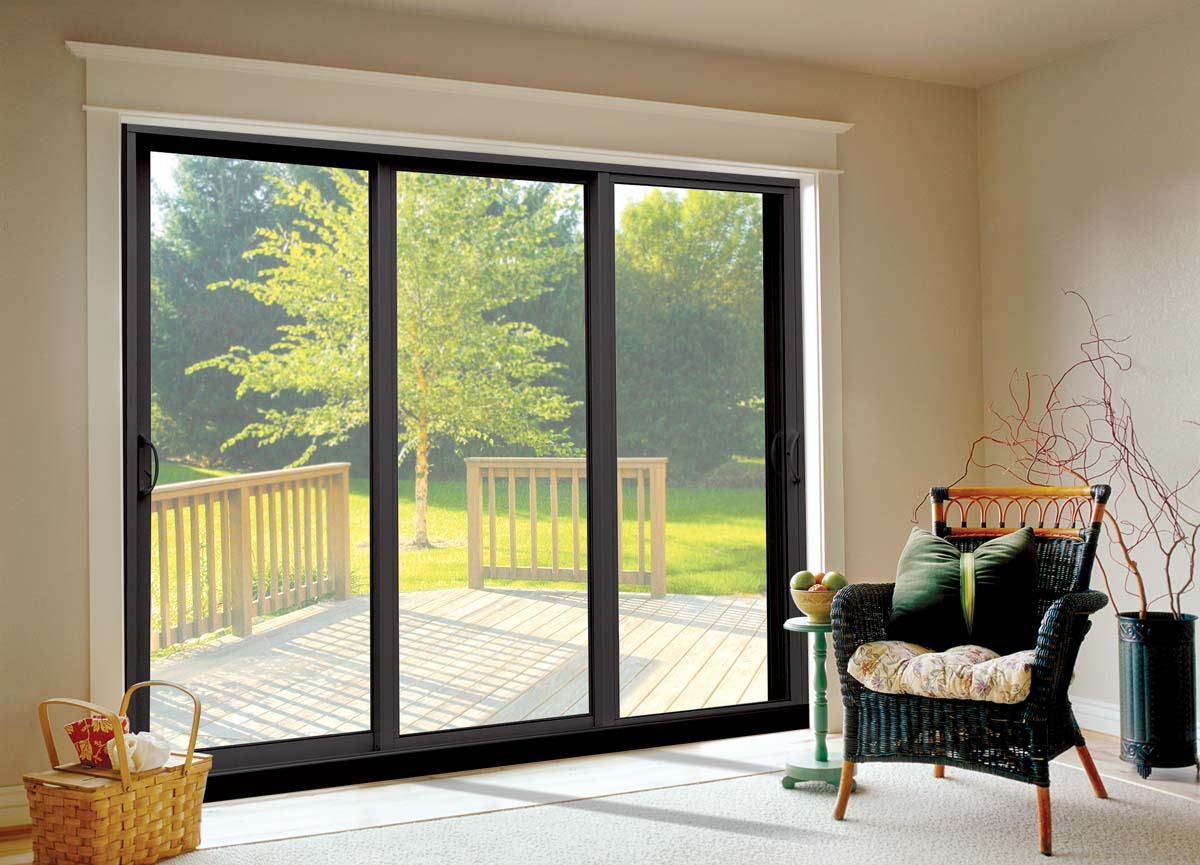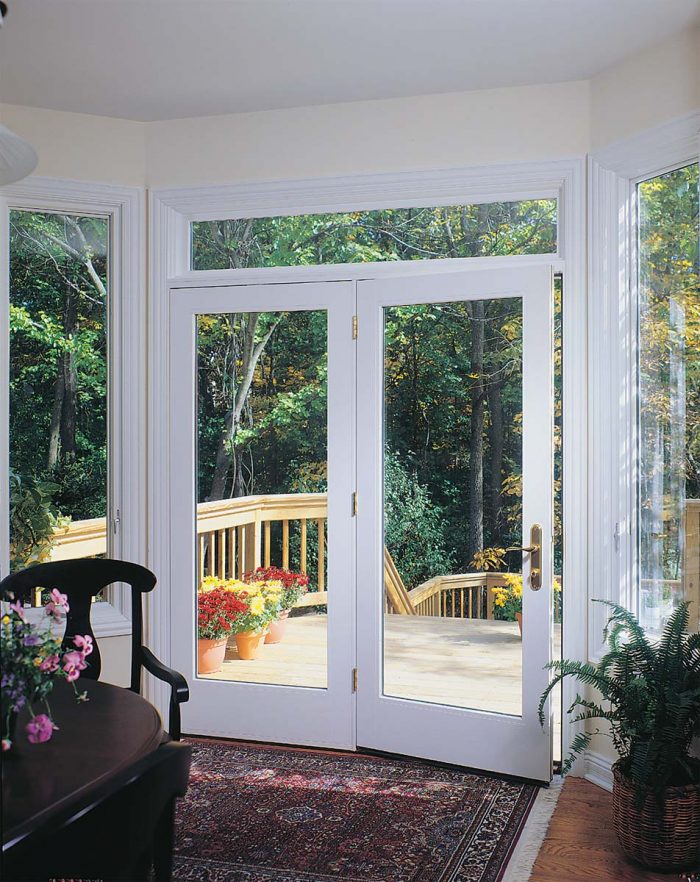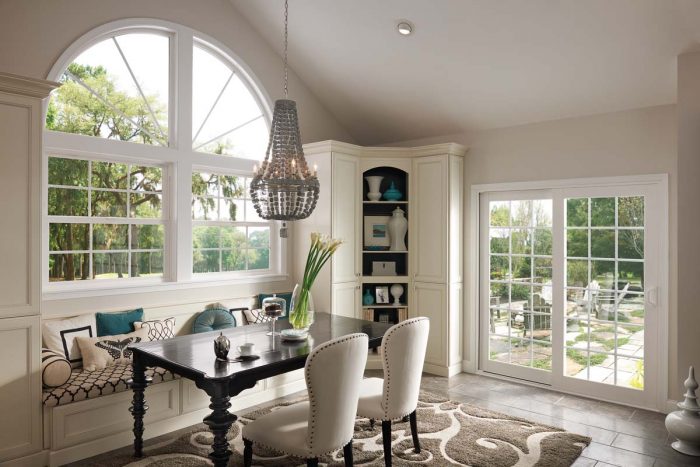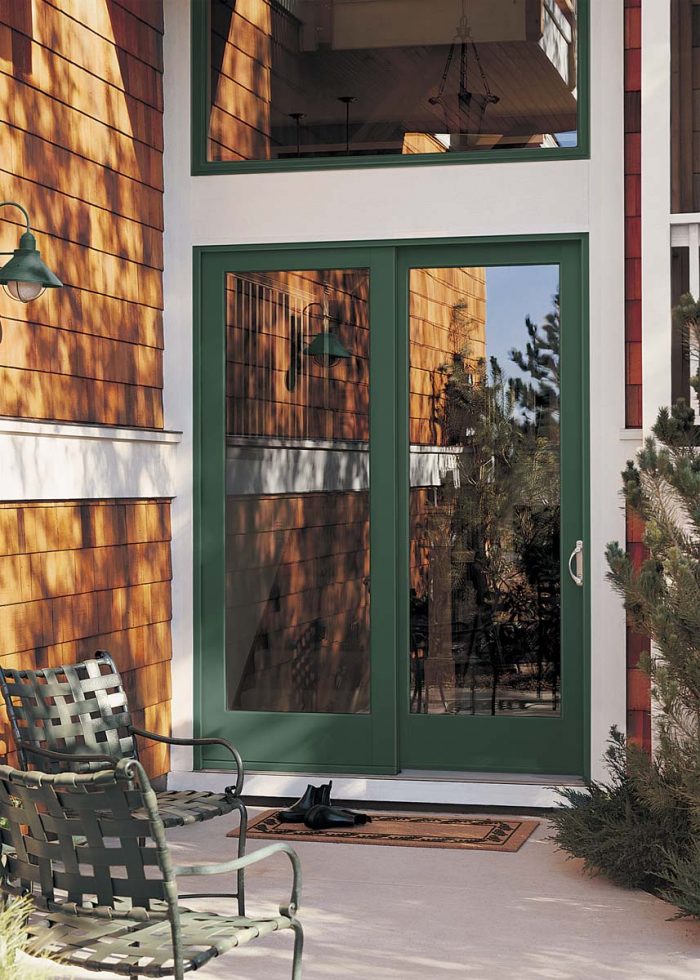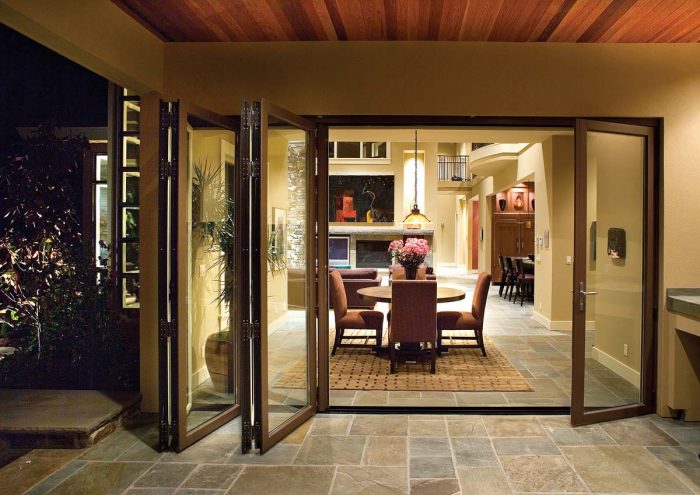Pick the Perfect Patio Door
Check the hardware, and consider the energy-performance rating for a smart purchase.
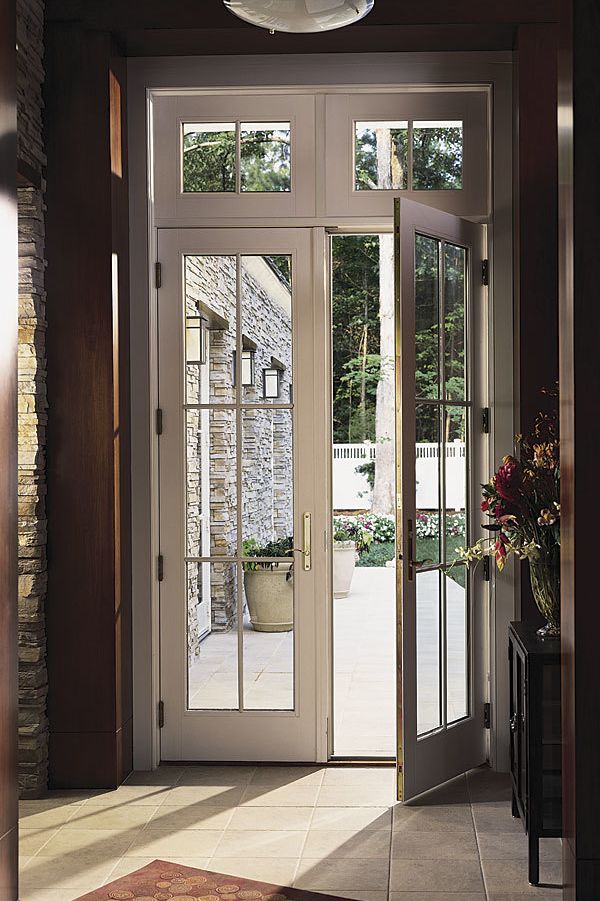
Synopsis: In homes with decks and outdoor-living spaces, patio doors can be real workhorses. They need to operate effortlessly, be energy efficient, repel pests and weather, and be attractive. In this article, senior editor Patrick McCombe takes a look at what you need to consider when choosing a patio door. All patio doors should meet certain performance criteria (multipoint lock and specific U-factor and solar heat-gain coefficient standards). Hinged and sliding patio doors then have their own sets of performance criteria, including locks and screens. Other choices to make include swing vs. sliding doors and doors vs. foldaway walls. Patio doors also come in a variety of materials, such as aluminum, fiberglass, steel, vinyl, and wood.
We ask a lot of patio doors. These huge panels of glass that provide wide-open views of the outdoors are expected to operate effortlessly while keeping us safe from drenching rains, high winds, pests, and intruders. We also expect them to keep our indoor-living spaces comfortable during the depths of winter and the dog days of summer. If that weren’t enough, we want our patio doors to be attractive, complementing both the interior and exterior of our homes.
With myriad choices available, consumers buying patio doors face a challenge. The typical 6-ft.-wide patio door comes in dozens of styles and can cost anywhere from several hundred to several thousand dollars. But fear not. Here, I’ll give you the tools that you need so that you can choose the best patio door for your situation.
Performance Ratings Are Easy To Come By
According to Rob Garofalo, patio-door product manager for Andersen, the best way to know you’re getting a quality sliding patio door is to look for the performance-grade (PG) rating. This rating, developed jointly by the Window & Door Manufacturers Association and the American Architectural Manufacturers Association, replaces the former set of standards known as the design-pressure (DP) rating. Performance grade is a measure of a door’s resistance to high winds and forced entry as well as its ability to keep out air and water during repeated cycles of positive and negative pressure. These cycles of pressurization and depressurization are common during strong storms and high winds. The scale ranges from PG 20 to PG 80. Garofalo suggests choosing a door with a PG rating of at least 40 in most of the country, with higher ratings for doors in coastal zones. The higher rating for coastal zones translates into a door that better resists wind and water during hurricanes and tropical storms.
You’ll find PG ratings for all sliding doors, but unfortunately, PG ratings aren’t yet standard for hinged patio doors, though many manufacturers still provide them for all or most of their hinged patio doors. If a door doesn’t have a PG rating, you’ll have to rely on the old design-pressure guidelines. A door with a DP rating of 40 is a good starting point for all but coastal zones. In either case, Christine Marvin of Marvin Windows urges door buyers to make an apples-to-apples comparison for a door’s intended use. For example, doors with a “light-commercial” designation are held to a higher standard than those specified as “residential.”
Of course, it’s also a good idea to check a door’s thermal performance. The easiest way is to look for an Energy Star logo, but a more thorough check is to identify the U-factor posted on the National Fenestration Rating Council (NFRC) label affixed to the glass. The lower the U-factor, the greater a window’s resistance to heat flow and the better its insulating properties. This information is also available in catalogs and on manufacturer websites.
Look for doors with a U-factor of 0.3 or lower, which is typical for a door with high-performance insulated glass. This glass is also better at blocking carpet- and furniture-fading UV-rays. The other valuable piece of information on the NFRC label is solar heat-gain coefficient (SHGC), which measures how much solar heat the glass admits. Cold-climate homes should have doors with an SHGC of 0.39 or higher. Warm-climate homes will be more comfortable with doors rated at 0.30 or lower, especially on unshaded western elevations.
When checking the SHGC and the U-factor, make sure the rating label features the “NFRC certified” stamp to ensure that the measurements given are for the whole door, including glazing, frame, and spacers, and not just the center of the glass. Center-of-glass measurements can make a door appear more efficient than it is.
Locks And Screens Matter, Too
Multipoint locks that activate additional latches in addition to the conventional latch at the handle are also an important feature on patio doors. These additional locking points boost security and weathertightness. If you’re installing a sliding door, Todd Kippel of ThermaTru also suggests intermediate bolts that allow some ventilation by locking the door in a partially open position without providing enough room for entry.
Finally, it’s a good idea to look at the quality of the screen doors. The best sliding screens have sturdy heavy-gauge frames that resist flexing and ball-bearing rollers that make sliding easy. Hinged screens, which are found on some hinged patio doors, should have sturdy frames and be easy to prop open so that you can move in and out of the house easily with food or furniture cushions.
Performance Must-Haves
|
Hinged patio doors
|
Sliding patio doors
|
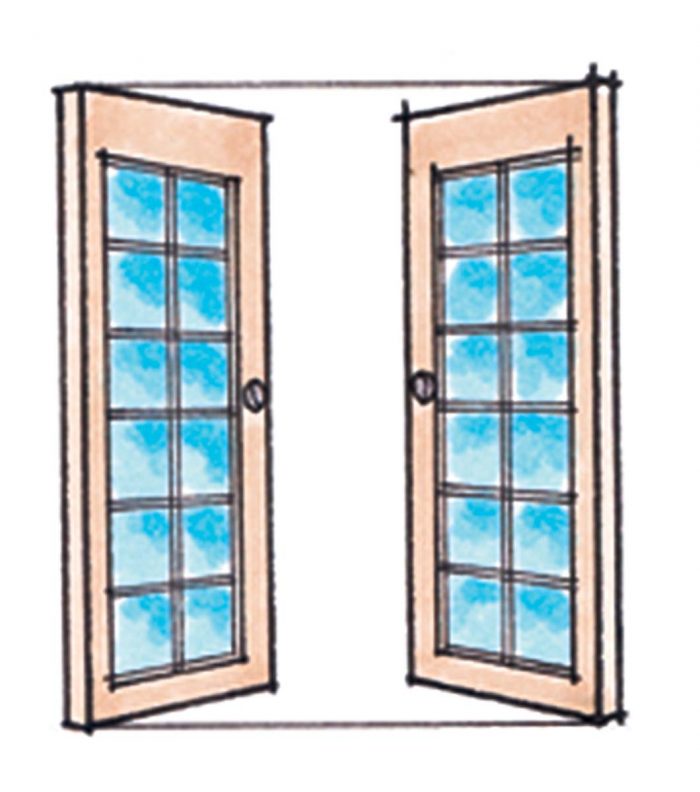 |
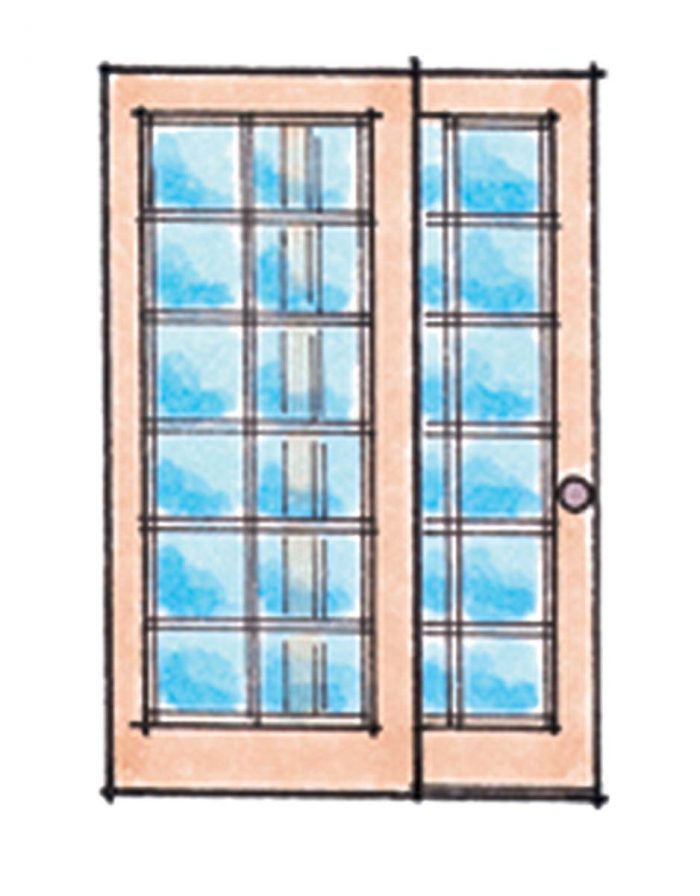 |
|
All patio doors
|
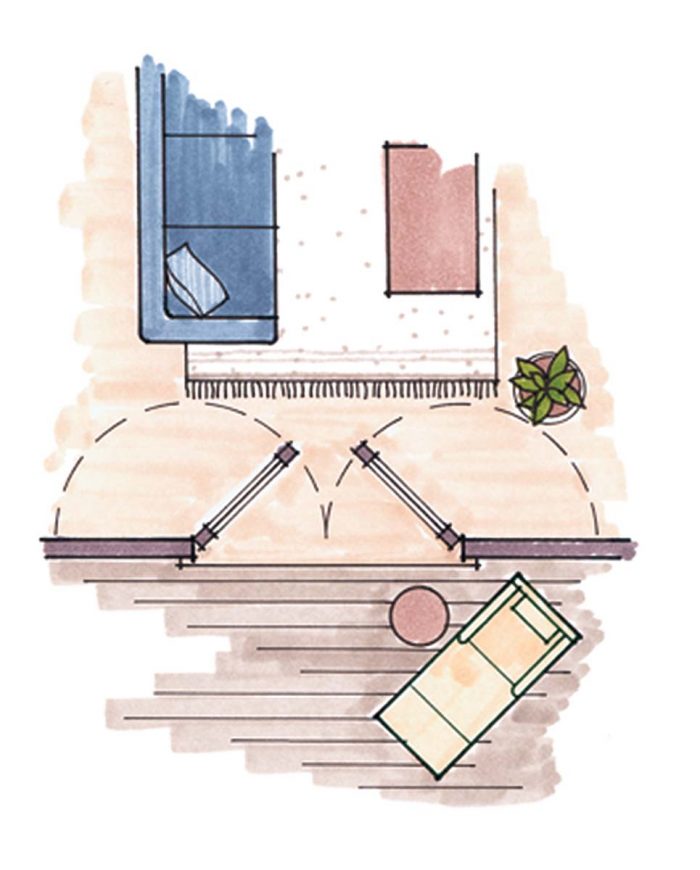 |
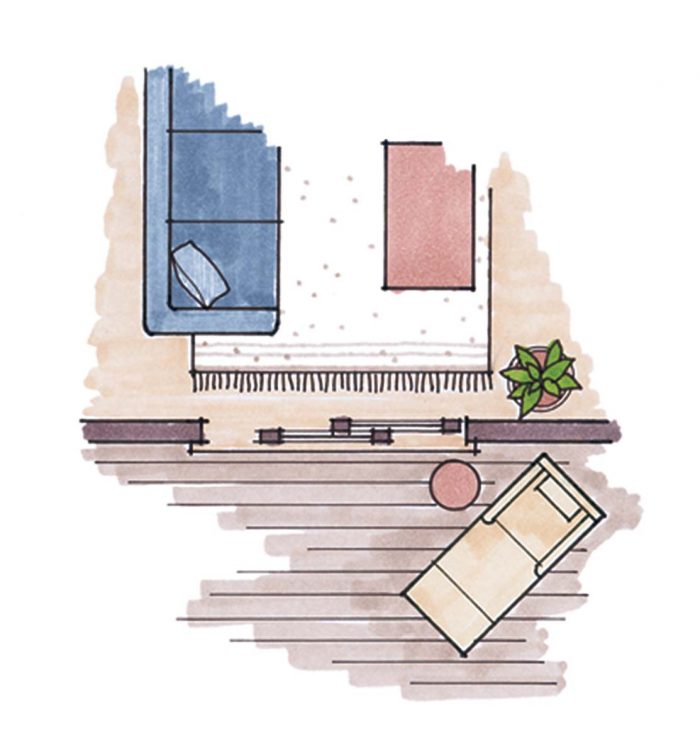 |
Swing vs. Slide
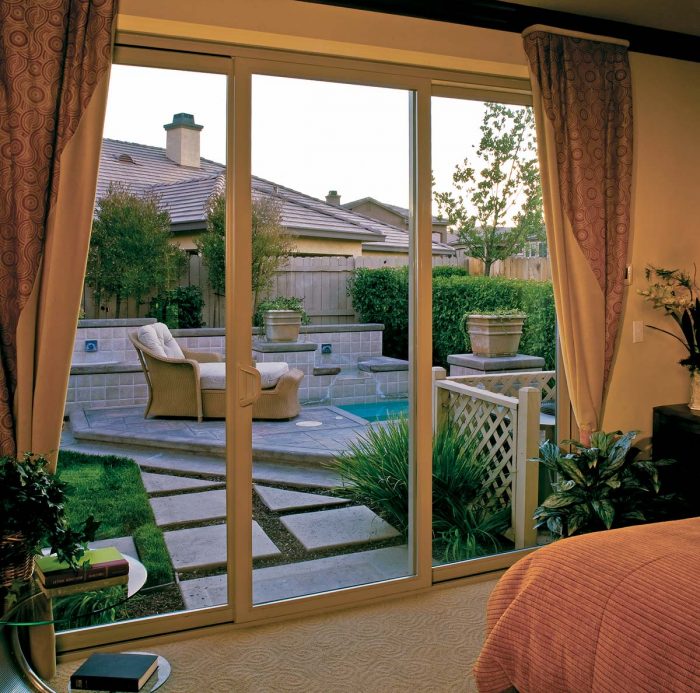
advantage of sliding doors is that they don’t take up floor space when opened, which allows furniture to be placed closer to the door without interfering with the door’s operation.
Unfortunately, sliding doors are the toughest to seal tightly, so inexpensive models typically have greater amounts of air leakage compared to similarly priced hinged doors. Sliding units are available in sizes from about 5 ft. wide and 6 ft. 8 in. tall to more than 16 ft. wide and 8 ft. tall. Transom tops can bring the total height to 10 ft. or more.
Hinged patio doors are available in three basic configurations: single-panel doors, center-hinge doors, and French doors. They come in a wide range of sizes, from about 3-ft.-wide, 6-ft.-8-in.-tall single-door units to multiple-panel units of almost unlimited width and height. Two-panel doors with one swinging panel are often described as center-hinge models. Center-hinge doors take up less floor space than doors with two operating panels, which are known as French doors. Center-hinge doors are easier to install and adjust than French doors, and they’re generally more tolerant of rough openings that aren’t quite plumb, level, and square.
By contrast, French doors are finicky to install and are less tolerant of imperfect openings. French doors also take up the most floor space. However, they’re great at seamlessly connecting indoor and outdoor living spaces.
In-Swing Or Out-Swing?
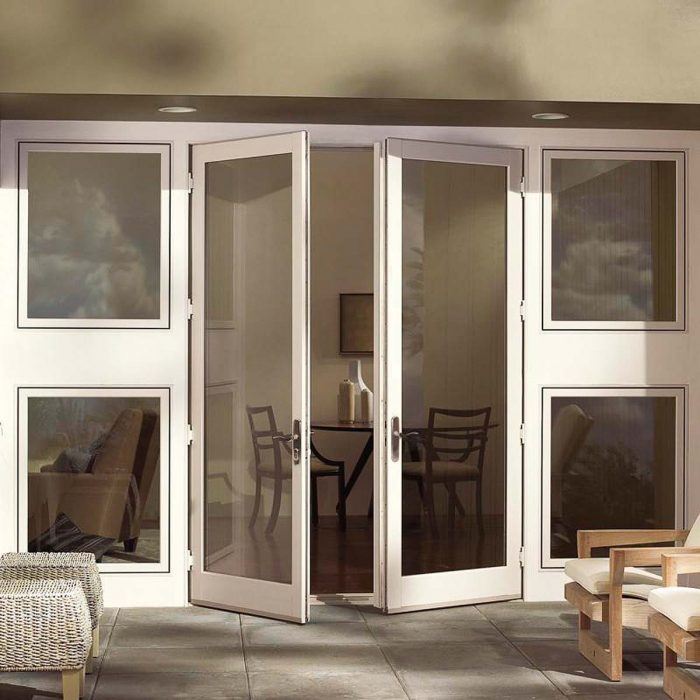
The amount of space available also can influence the choice between an out-swing or an in-swing door. For tight indoor areas, an out-swing door makes more sense, because the door swing won’t affect furniture placement inside the house. For tight outdoor areas, the opposite is true.
Patio-Door Materials
Patio doors are made of five basic materials: aluminum, fiberglass, steel, vinyl, and wood. All have strengths and weaknesses. Pricing assumes 6-ft.-wide by 6-ft. 8-in.-tall entry-level products with
basic hardware and no extras. Larger sizes and options such as divided lites, factory finishing, and upgraded hardware can add significantly to the cost.
Door Or Foldaway Wall?
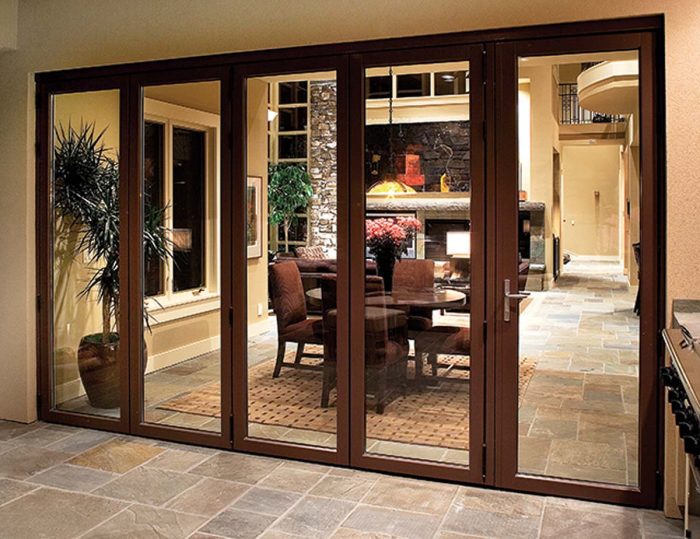
Seamless transition. When the weather is good, the four folding panels on this patio door from NanaWall can be pushed to the side, allowing the indoor and outdoor living spaces to flow together. For everyday use when the folding panels are closed, the single hinged patio door on the right provides access to the outdoors with minimal effort.
Fit For A Passive House

Triple glazing and tough frames. This superefficient patio door from Themotech Fiberglass has three layers of glass, triple weatherstripping, and a multipoint lock. Prices start at $3500 for a single 3-ft.-wide, 6-ft. 8-in.-tall door.
For more photos, illustrations, and details, click the View PDF button below:

